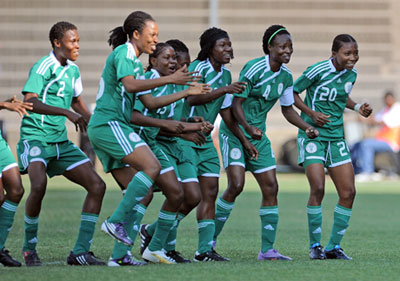Women’s sports have come a long way, but they still lag behind men’s sports in terms of popularity and recognition. Bridging this gap requires a multifaceted approach, addressing investment, media representation, cultural attitudes, and grassroots development.
The funding gap between men’s and women’s sports stifles the growth of female athletes and leagues. While brands like Nike and Visa have begun to back women’s sports, sponsorships, endorsements, and broadcasting deals for women remain a fraction of those in men’s sports.
To foster growth, more corporations must recognise the rising interest in women’s sports and commit to long-term partnerships. Government funding also plays a crucial role, especially in regions where private investment is limited. Public funds can provide the necessary infrastructure, training programs, and resources for female athletes to thrive.
Moreover, addressing pay disparities is vital. Equitable compensation is not just about fairness—it boosts morale among female athletes and inspires younger generations to consider sports as a viable career path.
Visibility drives popularity, yet women’s sports remain under-represented in the media. Studies show that women’s sports receive less than 10% of all sports coverage. This imbalance perpetuates the misconception that women’s sports are less engaging, despite evidence to the contrary. For instance, the 2023 FIFA Women’s World Cup shattered viewership records, proving that audiences are eager to engage when given the chance.
To change the narrative, broadcasters must prioritise broadcasting women’s leagues, tournaments, and individual performances. Engaging storytelling is equally critical—highlighting the journeys, struggles, and triumphs of women athletes fosters deeper connections with fans.
Social media platforms like Instagram, TikTok and YouTube are also powerful tools for female athletes and leagues to showcase their talent and engage directly with audiences, bypassing traditional media gatekeepers.
Challenging Cultural Attitudes
Cultural biases often dismiss women’s sports as less competitive or entertaining, limiting their appeal. Changing these perceptions starts with education. Schools can play a pivotal role by teaching children to value women’s sports and celebrating female athletes as role models. Families and communities should actively encourage girls to participate in sports and attend games, creating a supportive environment for budding athletes.
Influential endorsements can also make a difference. When male athletes, celebrities, and social media influencers advocate for women’s sports, they help shift societal attitudes and attract a broader audience.
Grassroots programs are the backbone of any thriving sports culture. Equal access to quality training facilities for girls and boys is essential to creating a level playing field. Establishing robust youth leagues further nurtures talent, connecting aspiring athletes with mentors and building a pipeline to professional sports.
Role models are equally important. Successful female athletes mentoring young players inspire confidence and ambition, paving the way for future generations of stars.
Leveraging Global Events
Major tournaments like the Women’s World Cup, WNBA Finals and the Olympics are golden opportunities to showcase talent and attract new fans. However, to maximise their impact, these events need strategic marketing campaigns that build excitement and draw diverse audiences.
Cross-promotion with men’s leagues and events can also expose women’s sports to broader fanbases. Additionally, host nations should capitalise on these tournaments to improve sports infrastructure and develop programs that leave a lasting legacy for women’s sports.
For sustained growth, stakeholders—including governments, media outlets, corporate sponsors, and sporting bodies—must collaborate to promote equality in sports. Organisations like FIFA and the International Olympic Committee (IOC) must continue driving initiatives that prioritise women’s sports at every level.
The road to equal popularity for women’s sports requires a concerted effort to address funding, visibility, cultural perceptions, and grassroots development. While progress will take time, the potential rewards are immense. As barriers fall and opportunities grow, women’s sports can captivate global audiences and inspire a new generation of athletes and fans. This isn’t just about entertainment—it’s a transformative step toward achieving gender equity across all spheres of life.
Women's sports have progressed significantly but still lag behind men's in terms of popularity and recognition due to gaps in investment, media representation, cultural attitudes, and grassroots development. The disparity in funding limits growth for female athletes, with sponsorships and broadcasting deals being minimal compared to men's sports. Increased corporate backing and government funding are essential to support infrastructure, training, and resources for women in sports. Addressing pay disparities is also crucial for fairness and inspiring future athletes.
Women's sports receive minimal media coverage, impacting their visibility and perceived engagement. However, events like the 2023 FIFA Women's World Cup have demonstrated substantial audience interest when given the spotlight. To change the narrative, broadcasting priorities need to shift, with emphasis on storytelling that highlights the stories of female athletes. Social media serves as an effective tool for athletes to connect with fans directly, bypassing traditional media barriers.
Cultural attitudes often undermine women’s sports, which is why educational initiatives and community support are necessary to foster appreciation and participation. Influential endorsements and role models are also vital in changing perspectives and inspiring young athletes. Grassroots programs that provide equal training opportunities are critical for developing talent and creating pathways to professional sports.
Global events like the Women's World Cup and the Olympics are opportunities to elevate women's sports, requiring strategic marketing and efforts to engage wider audiences. Nation hosts should leverage these events to enhance sports infrastructure and ensure lasting impacts. To achieve equal popularity of women's sports, collaboration among stakeholders is essential to address funding, visibility, cultural attitudes, and grassroots development. The journey is challenging, but the potential for transformation and gender equity is significant.






